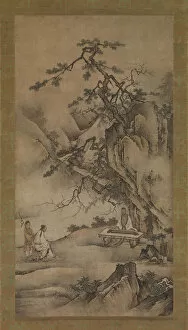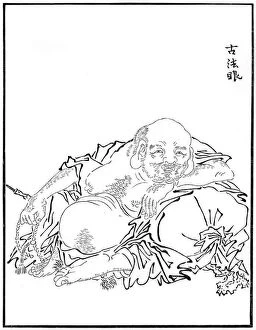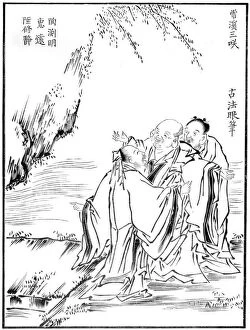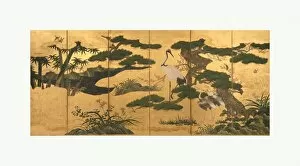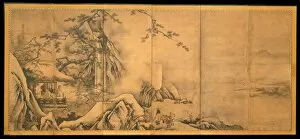Kano Motonobu Collection
Kano Motonobu, a prominent artist of the Muromachi period in early 16th century Japan
All Professionally Made to Order for Quick Shipping
Kano Motonobu, a prominent artist of the Muromachi period in early 16th century Japan, left behind a rich legacy of ink landscapes that continue to captivate viewers today. His masterful brushwork and attention to detail are evident in his various works, such as "Bo Ya Plays the Qin as Zhong Ziqi Listens" from the 1530s and "Flowers and Birds in a Spring Landscape" created during the mid-1500s. Motonobu's landscapes transport us to serene natural settings, where we can almost feel the gentle breeze rustling through trees or hear the soft trickle of water flowing down rivers. In one piece depicting a river scene, he skillfully captures its dynamic movement with fluid brushstrokes that seem to mimic nature itself. Another artwork titled "Hotei" portrays a jovial figure known for his laughter and good fortune, reflecting Motonobu's ability to convey both emotion and character through his art. "The Three Laughers, " another masterpiece by Motonobu from the 16th century, showcases his talent for capturing human expressions. The figures depicted exude joy and camaraderie as they share moments of mirth together. These paintings not only demonstrate Motonobu's technical prowess but also reveal insights into Japanese culture during this time. Even centuries later, Motonobu's work continues to inspire artists worldwide. In an 18th-century publication called "The Rambles of Motonobu, " British firm Witherby & Co paid homage to his artistic achievements by reproducing some of his most beloved pieces. This tribute speaks volumes about how influential Kano Motonobu was in shaping Japanese art history. Through motifs like flowers and birds set against spring landscapes, which appear repeatedly throughout his oeuvre, it becomes clear that nature held great significance for Motonobu.



